Share on
The humble bodyweight squat – a exercise so simple, yet so powerful, it might just be the unsung hero of the fitness world. Picture this: no fancy equipment, no gym membership required, just you and your own body weight, ready to embark on a journey to strength and endurance that would make even the mightiest gym bros nod in respect. But don’t let its simplicity fool you; the bodyweight squat is a force to be reckoned with, capable of transforming your fitness level faster than you can say “feel the burn!”
In this comprehensive guide, we’re going to dive deep into the world of bodyweight squats, exploring everything from proper form to performance metrics, and even how to incorporate them into your fitness routine without your legs staging a revolt. Whether you’re a complete newbie who thinks a squat is something ducks do in ponds, or a seasoned pro looking to take your game to the next level, this guide has got you covered. So, strap in (or should I say, squat down?), and let’s embark on this quad-quaking journey together!
Key Takeaways:
- Bodyweight squats are a versatile, accessible exercise that builds strength and endurance.
- The average male lifter can perform 57 reps, while females average 39 reps.
- Proper form is crucial for maximizing benefits and preventing injury.
- Performance varies by age and fitness level, with specific metrics for each category.
- Incorporating bodyweight squats into various workout routines can enhance overall fitness.
Table of Contents
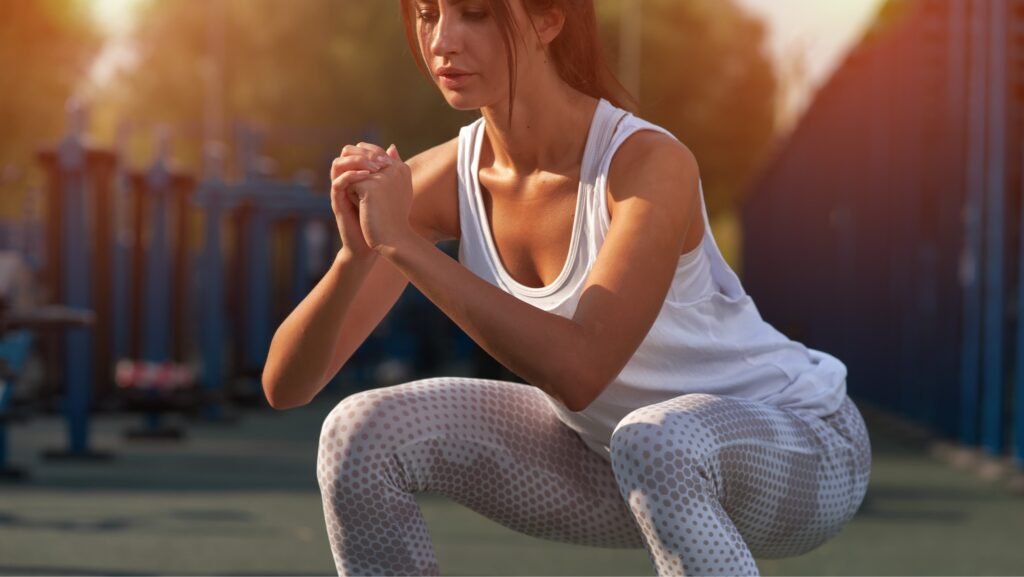
Introduction to Bodyweight Squats
Definition and Importance
A bodyweight squat is a lower body exercise performed without any external resistance, relying solely on your own body weight. This compound movement primarily targets the quadriceps, hamstrings, and glutes, while also engaging the calves, core, and lower back muscles.
Bodyweight squats offer numerous benefits, including improved strength, mobility, and functional fitness. They help build a strong foundation for more advanced lower body exercises, such as weighted squats and Olympic lifts. Moreover, the functional nature of the squat movement translates well to everyday activities, making it an essential exercise for overall health and well-being.
Muscles Worked
The primary muscles targeted during a bodyweight squat are the quadriceps, hamstrings, and glutes. The quadriceps, located on the front of the thigh, are responsible for extending the knee joint, while the hamstrings, located on the back of the thigh, work to flex the knee and extend the hip. The glutes, the largest muscle group in the body, play a crucial role in hip extension and stabilization during the squat movement.
Secondary muscles engaged during bodyweight squats include the calves, which assist in ankle flexion and extension, and the core and lower back muscles, which work to maintain a stable and upright posture throughout the movement. By targeting multiple muscle groups simultaneously, bodyweight squats contribute to overall full-body strength and functional fitness.
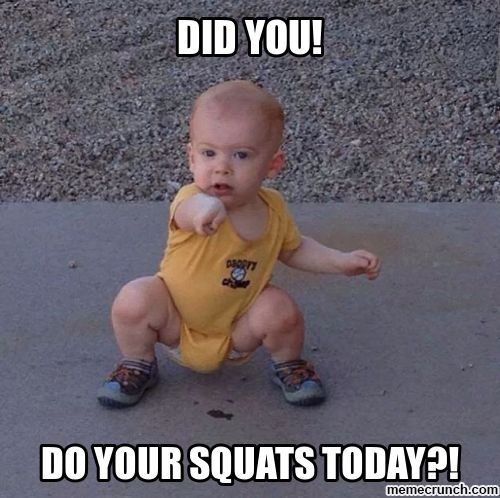
Proper Bodyweight Squat Technique
Starting Position
To begin a bodyweight squat, start by standing with your feet roughly hip-width apart, with a slight outward rotation of the toes (about 5-20 degrees). This foot placement allows for optimal balance and engagement of the target muscle groups. Maintain an upright posture, with your chest up and shoulders back, creating a neutral spine alignment.
To begin a bodyweight squat, start by standing with your feet roughly hip-width apart, with a slight outward rotation of the toes (about 5-20 degrees). This foot placement allows for optimal balance and engagement of the target muscle groups. Maintain an upright posture, with your chest up and shoulders back, creating a neutral spine alignment.
Movement Execution
Initiate the lowering phase of the squat by hinging at the hips and flexing the knees simultaneously. As you descend, focus on maintaining an upright torso, with your chest up and core engaged. Aim to lower your body until your thighs are parallel to the ground or slightly below, depending on your mobility and flexibility.
Once you’ve reached the desired depth, begin the ascending phase by pushing through your heels and extending your hips and knees. Continue pressing upward until you return to the starting position, fully extending your legs and squeezing your glutes at the top of the movement.
Proper breathing technique can help maintain core stability and improve overall performance. As a general rule, inhale during the descent and exhale as you ascend. This breathing pattern helps maintain intra-abdominal pressure, which supports the spine and core throughout the movement.
Common Mistakes and Corrections
While the bodyweight squat may seem simple, there are several common mistakes that can hinder progress and increase the risk of injury. One frequent issue is allowing the knees to cave inward during the descent, which can place undue stress on the knee joint. To correct this, focus on actively pushing your knees outward, aligning them with your toes.
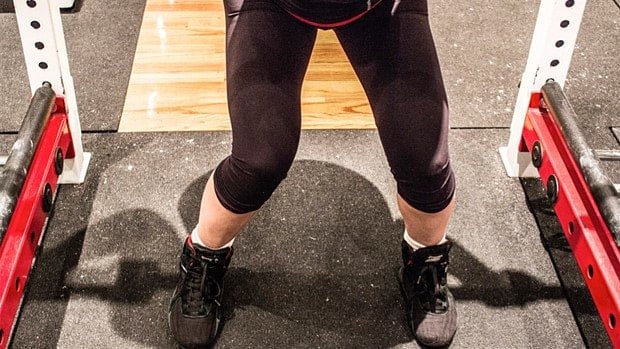
Another mistake is lifting the heels off the ground, which can indicate a lack of ankle mobility or an improper shift in weight distribution. To address this, concentrate on keeping your weight in your heels throughout the movement, and consider working on ankle mobility exercises to improve your range of motion.
Rounding the back is another common error that can lead to lower back strain and compromised form. Maintain a neutral spine by keeping your chest up and core engaged, and avoid allowing your upper body to fold forward excessively.
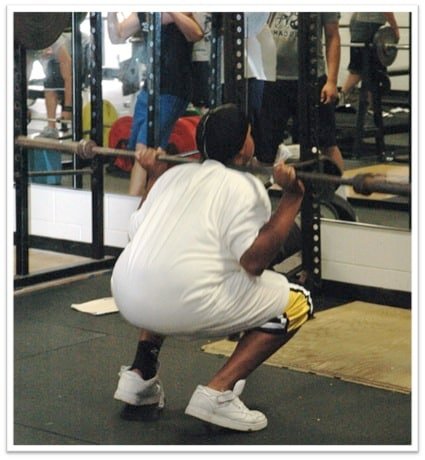
Lastly, failing to achieve sufficient depth can limit the overall effectiveness of the exercise. Aim to lower your body until your thighs are at least parallel to the ground, or even slightly below if your mobility allows. If you struggle with depth, consider using a target (such as a box or bench) to gauge your progress and gradually work towards a fuller range of motion.
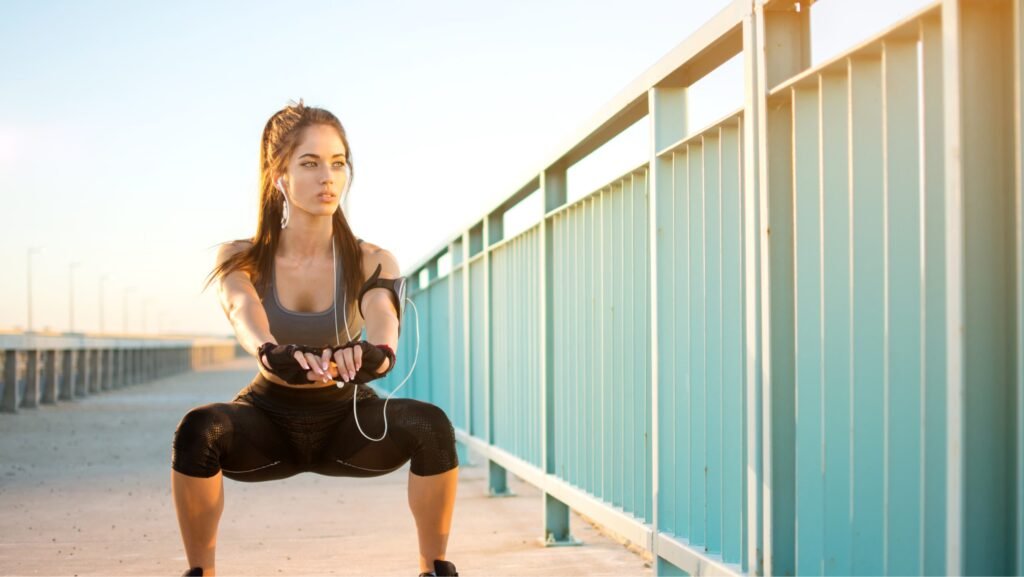
Bodyweight Squat Standards
Understanding Strength Levels
Strength level categories help classify lifters based on their performance in a given exercise, providing a benchmark for comparison and goal-setting. The five primary strength level categories are:
- Beginner: Individuals who are new to resistance training or have limited experience with the specific exercise.
- Novice: Lifters who have some experience with the exercise and have developed a basic level of strength and technique.
- Intermediate: Individuals who have been consistently training for a period of time and have made significant progress in strength and performance.
- Advanced: Lifters who have achieved a high level of strength and proficiency in the exercise, often through years of dedicated training.
- Elite: Individuals who have reached the upper echelon of strength and performance, often competing at a high level or setting records in their respective fields.
Several factors can influence an individual’s strength level, including age, gender, training experience, and genetic predisposition. Understanding these factors can help you set realistic goals and expectations for your own progress.
Male Bodyweight Squat Standards
According to data from Strength Level, an online platform that collects and analyzes user-submitted strength data, the average male lifter performs 57 repetitions of the bodyweight squat, placing them in the Intermediate strength level category.
The breakdown of rep ranges for each strength level is as follows:
- Beginner: 0-19 reps
- Novice: 20-39 reps
- Intermediate: 40-59 reps
- Advanced: 60-79 reps
- Elite: 80+ reps
It’s important to note that these standards are based on the entire male community, and may vary based on factors such as age and training experience. Strength Level also provides age-specific standards, ranging from 15 to 90 years old, allowing for a more precise comparison among peers.
Female Bodyweight Squat Standards
For female lifters, the average number of repetitions performed in the bodyweight squat is 39, which falls within the Intermediate strength level category.
The breakdown of rep ranges for each strength level is as follows:
- Beginner: 0-14 reps
- Novice: 15-29 reps
- Intermediate: 30-44 reps
- Advanced: 45-59 reps
- Elite: 60+ reps
As with the male standards, these categories are based on the entire female community, and age-specific standards are also available for a more accurate comparison.
| Strength Level | Male Reps | Female Reps |
|---|---|---|
| Beginner | 0-19 | 0-14 |
| Novice | 20-39 | 15-29 |
| Intermediate | 40-59 | 30-44 |
| Advanced | 60-79 | 45-59 |
| Elite | 80+ | 60+ |

Progression and Variations
Beginner Modifications
If you’re new to bodyweight squats or have limited mobility, there are several modifications you can use to build a strong foundation and improve your form. Wall squats are an excellent starting point, as they provide additional balance and support while you focus on maintaining proper technique.
Box squats are another useful modification, allowing you to control the depth of your squat and gradually progress to a fuller range of motion. Simply place a box or bench behind you and lower your body until your glutes gently touch the surface, then press back up to the starting position.
For those who need extra assistance, using TRX straps or resistance bands can help support your body weight and reduce the overall load on your muscles. As you build strength and confidence, gradually reduce the assistance until you can perform unassisted bodyweight squats with proper form.
Advanced Variations
Once you’ve mastered the basic bodyweight squat, there are several advanced variations you can incorporate into your training to continue challenging your muscles and improving your performance. Jump squats are an excellent option for developing explosive power, as they require you to quickly extend your hips and knees to propel your body off the ground.
Single-leg squats, also known as pistol squats, are a unilateral exercise that targets each leg independently, helping to identify and address any strength imbalances between your legs. These squats also place a greater demand on your balance and stability, making them a valuable addition to your training routine.
Tempo squats are another advanced variation that emphasizes time under tension, challenging your muscles to work harder for longer periods. By slowing down the lowering phase of the squat and pausing at the bottom before ascending, you can increase the overall difficulty and stimulate greater muscle growth and endurance.
Programming for Improvement
To continually progress and improve your bodyweight squat performance, it’s essential to implement a well-structured training program that targets your specific goals. For those looking to build endurance, performing higher rep schemes (15+ reps) with shorter rest periods can help improve your ability to sustain effort over an extended duration.
If your goal is to increase strength, focusing on lower rep ranges (6-12 reps) with longer rest periods can help you build the necessary muscle and neural adaptations to handle heavier loads. For power development, incorporating explosive movements like jump squats and using moderate rep ranges (3-6 reps) can help you generate more force in a shorter amount of time.
In terms of frequency, aiming to perform bodyweight squats 3-5 times per week can provide a sufficient stimulus for progress without overloading your muscles and joints. Be sure to incorporate bodyweight squats into a well-rounded, full-body workout routine that targets all major muscle groups for optimal results.
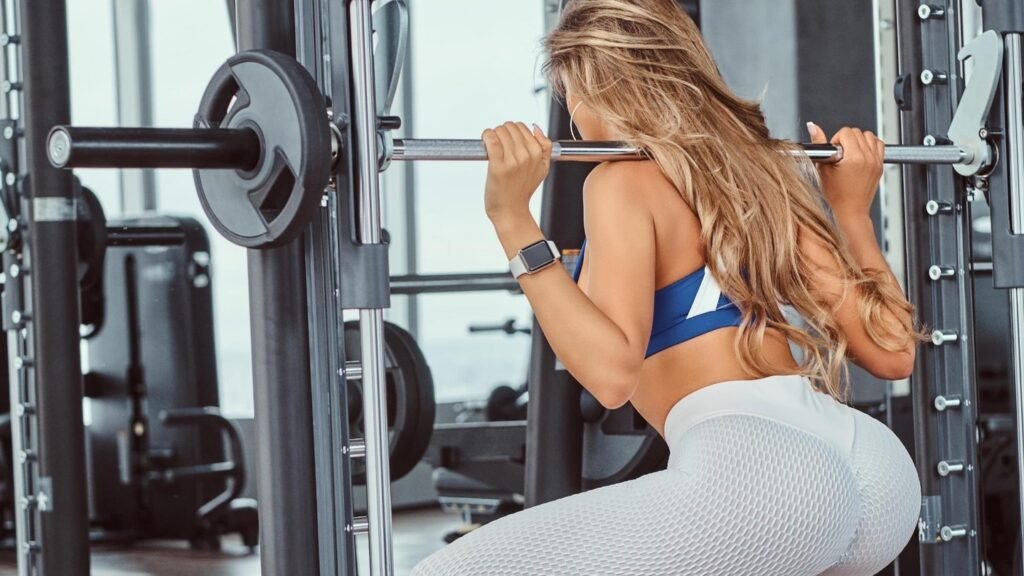
Assessing Your Squat Performance
Using the Strength Level Calculator
One helpful tool for gauging your current strength level and setting realistic goals is the Strength Level calculator. This online platform allows you to input your bodyweight, gender, and the number of repetitions you can perform in the bodyweight squat, then compares your results to other lifters in the database.
To use the calculator, simply visit the Strength Level website and navigate to the bodyweight squat page. Input your personal information and rep max, and the calculator will generate a detailed report showing your strength level category and percentile ranking among lifters of similar age and gender.
When interpreting your results, keep in mind that these standards are based on a large sample size and may not account for individual differences in training experience, genetics, and other factors. Use the information provided as a general guideline, but don’t get discouraged if you fall short of a particular standard. Instead, focus on setting achievable goals and consistently working towards improving your own performance over time.
Tracking Progress
To ensure steady progress and identify areas for improvement, it’s crucial to track your bodyweight squat performance regularly. One simple method is to keep a training log, either in a physical notebook or using a digital app, where you record the date, number of sets and reps, and any relevant notes about your form or energy levels.

Another valuable tool for tracking progress is video analysis. Periodically filming your squat sessions from different angles can help you identify any technical flaws or inconsistencies in your form, allowing you to make targeted adjustments and refine your technique over time.
When setting goals for your bodyweight squat progression, use the SMART framework to ensure they are Specific, Measurable, Achievable, Relevant, and Time-bound. For example, instead of simply aiming to “improve your squat,” set a specific goal like “Increase my bodyweight squat rep max from 30 to 40 repetitions within the next 8 weeks.” This clear and focused target will help you stay motivated and accountable as you work towards your objectives.
Integrating Bodyweight Squats into Your Fitness Routine
Integrating Bodyweight Squats into Your Fitness Routine
Before diving into your main bodyweight squat session, it’s essential to properly warm up your muscles and joints to reduce the risk of injury and enhance your overall performance. Incorporating bodyweight squats into your dynamic warm-up routine is an excellent way to prepare your lower body for more intense training.
Begin with a few minutes of light cardio, such as jogging in place or jumping jacks, to increase your heart rate and body temperature. Then, perform a series of dynamic stretches and mobility drills that target the hips, knees, and ankles, such as leg swings, walking lunges, and ankle rotations.
As you move through your warm-up, gradually increase the depth and intensity of your bodyweight squats, focusing on maintaining proper form and engagement of your core and lower body muscles. This progressive approach will help ensure that you’re fully prepared to tackle your main workout with confidence and efficiency.
Circuit Training
Bodyweight squats are a versatile exercise that can be easily incorporated into a variety of training styles, including high-intensity interval training (HIIT) and circuit-based workouts. By combining squats with other bodyweight exercises like push-ups, lunges, and burpees, you can create a full-body workout that challenges your strength, endurance, and cardiovascular fitness.
When designing your circuit, aim to include exercises that target different muscle groups and movement patterns, allowing for a well-rounded and balanced workout. For example, you might perform a set of bodyweight squats, followed by a set of push-ups, then a set of alternating lunges, and finally a set of mountain climbers.

To increase the intensity and metabolic demand of your circuit, minimize rest periods between exercises and aim to complete the entire circuit multiple times, with short breaks between rounds. This style of training is not only time-efficient but also helps improve your overall conditioning and ability to perform under fatigue.
Recovery and Active Rest
While it’s important to challenge your body and progressively overload your muscles to stimulate growth and adaptation, it’s equally crucial to prioritize recovery and allow your body adequate time to rest and rebuild between training sessions.
On days when you’re not performing heavy squat sessions or intense lower body workouts, consider incorporating bodyweight squats into your active recovery routine. Performing a few sets of squats with a focus on proper form and controlled tempo can help promote blood flow, reduce muscle soreness, and maintain your movement patterns between workouts.
Remember, even during recovery sessions, it’s essential to maintain proper form and technique to avoid unnecessary strain or injury. Listen to your body and adjust your intensity and volume as needed to ensure you’re getting the most benefit from your active rest days.
Conclusion
Throughout this comprehensive guide, we’ve explored the many facets of the bodyweight squat, from its fundamental importance in building lower body strength and mobility to the finer details of proper technique and progression. As you continue on your fitness journey, keep these key takeaways in mind:
Mastering proper form should always be your top priority, even as you work towards increasing your rep counts and advancing to more challenging variations. A solid technical foundation will not only help you maximize the benefits of the exercise but also reduce your risk of injury and set the stage for long-term progress.
2. Understanding your current strength level and using appropriate standards as a guideline can be a valuable tool for setting realistic goals and tracking your progress over time. However, remember that these standards are just that – a guide, not a strict rule. Focus on your own individual journey and celebrate your personal milestones along the way.
3. Continuous progression and variation are key to maintaining motivation, avoiding plateaus, and ensuring well-rounded development of your lower body strength and fitness. Don’t be afraid to experiment with different rep ranges, tempos, and modifications to keep your workouts fresh and challenging.


